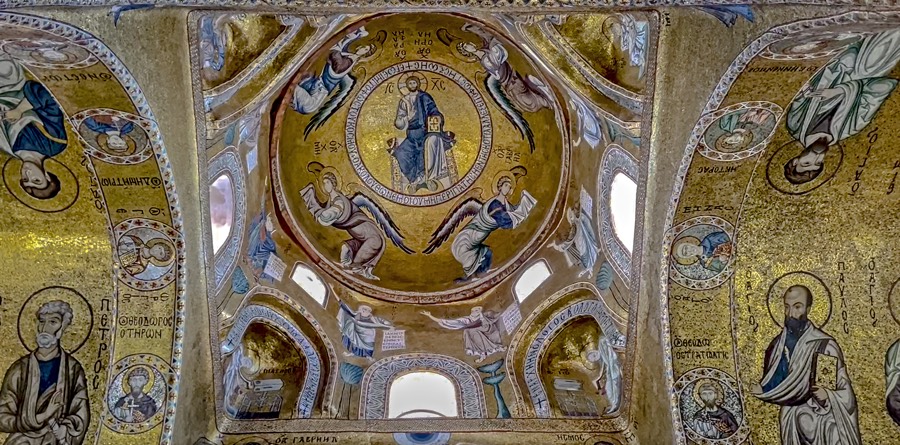At the centre of the dome and surrounded by four adoring angels, the Christ Pantocrator of Santa Maria dell’Ammiraglio is enclosed in a medallion containing verses from the Gospel of John: “I am the light of the world; He who follows Me shall not walk in darkness, but have the light of life.”
The Pantocrator, from the Greek word for ‘ruler of all things’, has his right hand raised in the act of blessing the faithful: the two arched fingers symbolise Christ’s dual nature, divine and earthly, while the other three, joined together, are an allegory of the Holy Trinity. This hand pose was also used in ancient times by Roman emperors when they asked for silence. With his left hand, he holds a closed volume: the Gospel.
Christ Pantocrator, majestic and with a stern but benevolent gaze, is crowned with a crusader’s nimbus in memory of his sacrifice, richly decorated with gems and jewels. On either side of the nimbus, the Greek letters IC XC, meaning Jesus Christ, are present. He has long, flowing hair and a rosy complexion. Christ Pantocrator is the Almighty, the King of Kings, he has a light-coloured robe and a blue mantle, which symbolises humanity.
The iconography, of classical Byzantine origin, is often found in the Christian Middle East, and is widespread throughout southern Italy, but while he is depicted as a half-length figure in Monreale and Cefalù, he is seated on a throne in the Martorana, with symmetrical feet.
The atmosphere, thanks to the gold background, is abstract and two-dimensional: Christ is immersed in a golden, luminous sky, like a casket of light.
